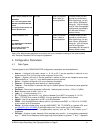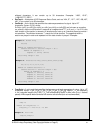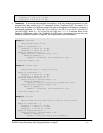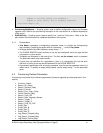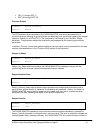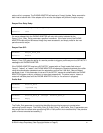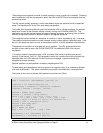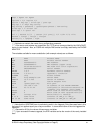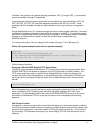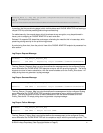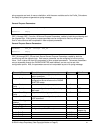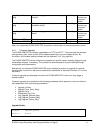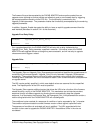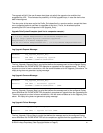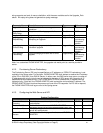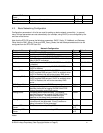
In addition, the contents of the general purpose parameters, GPP_A, through GPP_P, are available
as macro variables A through P, respectively.
A secondary set of general purpose parameters is also available for macro substitution, GPP_SA,
GPP_SB, GPP_SC, GPP_SD, using the respective expressions SA, SB, SC, and SD. These
parameters are not accessible through the web interface, and can only be set via a configuration
profile.
Strings identified above as "val" values are strings which can include variable substitution. The macro
variables are invoked by prefixing the name with a ‘$’ character (e.g. $MAC). The substitution works
even within a quoted string, without requiring additional escapes. If the variable name is immediately
followed by an alphanumeric character, enclose the variable name in parentheses (e.g.
"$(MAC)config.xml" ).
To include a dollar sign in the rule, escape it with another dollar sign. That is $$ maps to $.
Profile_Rule syntax examples (each line is a separate example):
/pap2.cfg
pserv.myvoice.com:42000/sip/$MA/pap2.cfg
[--key 6e4f2a8733ba7c90aa13250bde4f6927]ur.well.com/Gj2fLx3Nqbg/a.cfg
(<1.0)?/pre-rel.cfg | /curr.cfg
Profile Example Scenarios:
Enterprise LAN with DHCP Supplied TFTP Server Name:
The DHCP server automatically advertises a TFTP server name to service the local network. Each
PHONE ADAPTER in the network is supplied a unique CFG file based on its MAC address. The
TFTP server would also contain a generic Phone Adapter2000.cfg in its tftp-root directory that
contains the Profile_Rule indicated below. It would additionally carry individualized CFG files, one
per device, within a tree below the tftp-root node. Each of these files would then individualize the
devices.
/profiles/$MA/pap2.cfg
When first powered-on, unprovisioned devices would download the /pap2.cfg file from the TFTP
server indicated by DHCP, (following their manufacturing default setting for the Profile_Rule
parameter). The downloaded file would then direct the PHONE ADAPTER to resync to the server
and fetch the individualized CFG file, as per the rule above, which completes the provisioning
sequence.
VoIP Service Provider:
Conceptually, a service provider solution would follow the steps as in the above example. In addition,
it would then proceed to enable stronger encryption by implementing one more provisioning step, with
one more level of redirection, involving a random CFG file path and encryption key. Hence, each of
the “first-stage” CFG files above would point to a “second-stage” CFG file, with entries such as the
following:
© 2004 Linksys Proprietary (See Copyright Notice on Page 2)
40



